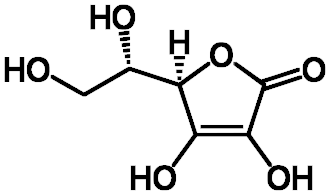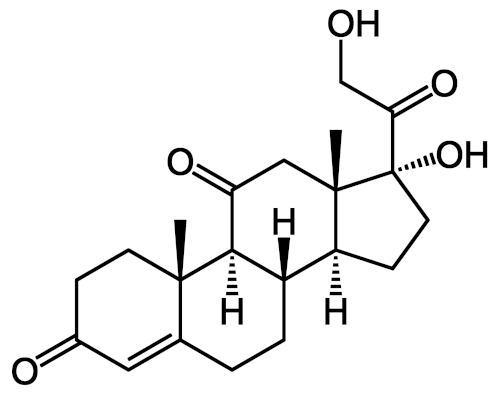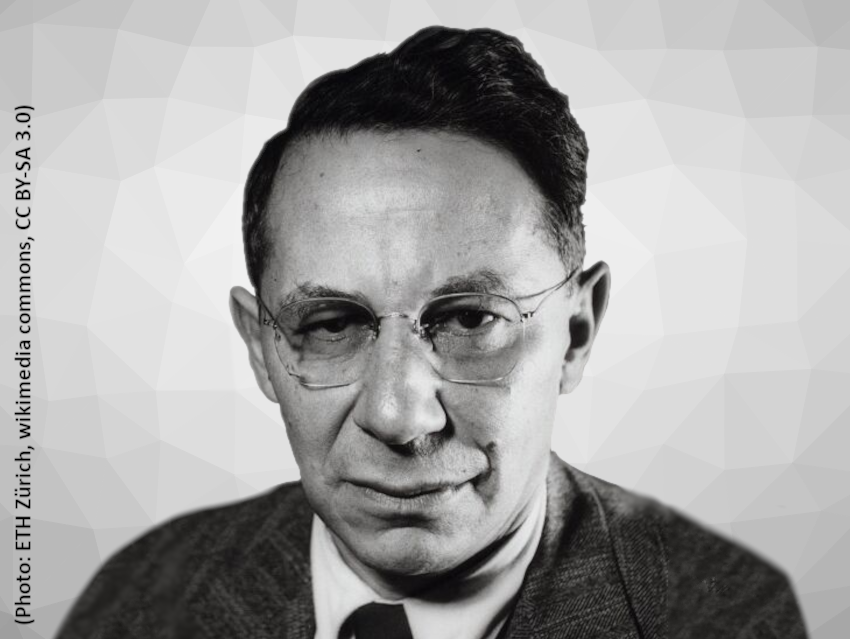Tadeusz Reichstein was born on July 20, 1897, into a Jewish family in Włocławek in today’s Poland, then part of the Russian Empire. He spent his childhood in Kyiv, Ukraine, Jena, Germany, and Basel, Switzerland, where the family moved when he was eight years old. He became a Swiss citizen in 1914.
Reichstein studied chemistry at the Swiss Federal Institute of Technology, (ETH) Zurich, Switzerland, where he received his diploma in 1920. He then worked on the volatile constituents of the flavor of roasted coffee, first as part of the work for his doctorate under the supervision of Hermann Staudinger, and later financed by a firm that produced malt coffee.
In 1929, Reichstein qualified as Lecturer at ETH Zurich. In 1931, he became Assistant to Leopold Ružička there. In 1934, he moved to the University of Basel, Switzerland, as Titular Professor. Reichstein became an Associate Professor there in 1937 and was named Professor of Pharmaceutical Chemistry in 1938. In 1946, he also became Professor of Organic Chemistry in Basel. He held both positions until his retirement in 1967. Tadeusz Reichstein died on August 1, 1996, in Basel.
In addition to the Nobel Prize in Physiology or Medicine in 1950 (see below) and many other honors, Reichstein received the Marcel Benoist Prize in 1948, the Cameron Prize from the University of Edinburgh in 1951, the Copley Medal from the Royal Society of London in 1968, and both the Medicus-Magnus Medal from the Medical Council of the Polish Academy and the Copernicus Gold Medal from the Polish Academy of Medical Sciences in 1994.
Research
 In 1933, Reichstein and his colleagues developed a synthesis for vitamin C or ascorbic acid (pictured on the right) [1], called the Reichstein process. The process starts from D-glucose, which is converted to D-sorbitol by hydrogenation, followed by fermentation to give L-sorbose and a protection of hydroxyl groups as acetals. An oxidation then gives 2-keto-L-gulonic acid, which undergoes a ring-closing reaction to obtain vitamin C. Some modern industrial methods for the production of vitamin C are still based on a modified Reichstein process.
In 1933, Reichstein and his colleagues developed a synthesis for vitamin C or ascorbic acid (pictured on the right) [1], called the Reichstein process. The process starts from D-glucose, which is converted to D-sorbitol by hydrogenation, followed by fermentation to give L-sorbose and a protection of hydroxyl groups as acetals. An oxidation then gives 2-keto-L-gulonic acid, which undergoes a ring-closing reaction to obtain vitamin C. Some modern industrial methods for the production of vitamin C are still based on a modified Reichstein process.
 Reichstein also worked on hormones, leading him to the isolation of cortisone, a steroid hormone (pictured on the right) [2]. Cortisone is an inactive compound or prodrug that is converted to the active form, cortisol, by the enzyme 11β-hydroxysteroid dehydrogenase type 1. In medications, cortisol is known as hydrocortisone. and can be used to treat, e.g., rheumatoid arthritis and asthma.
Reichstein also worked on hormones, leading him to the isolation of cortisone, a steroid hormone (pictured on the right) [2]. Cortisone is an inactive compound or prodrug that is converted to the active form, cortisol, by the enzyme 11β-hydroxysteroid dehydrogenase type 1. In medications, cortisol is known as hydrocortisone. and can be used to treat, e.g., rheumatoid arthritis and asthma.
For this work, Reichstein was awarded the Nobel Prize in Physiology or Medicine in 1950 together with Edward Calvin Kendall and Philip Showalter Hench “for their discoveries relating to the hormones of the adrenal cortex, their structure and biological effects.”
Tadeusz Reichstein is the answer to Guess the Chemist (127).
References
[1] T. Reichstein, A. Grüssner, Eine ergiebige Synthese der l-Ascorbinsäure (C-Vitamin), Helv. Chim. Acta 1934, 17, 311–328. https://doi.org/10.1002/hlca.19340170136
[2] T. Reichstein, Chemistry of the adrenal cortex hormones, Nobel Lecture, December 11, 1950.
Sources
• Tadeus Reichstein: Biographical, Nobel Lectures, Physiology or Medicine 1942-1962, Elsevier Publishing Company, Amsterdam, 1964.
• M. Rothschild, Tadeus Reichstein: 20 July 1897 – 1 August 1996, Biogr. Mem. Fellows R. Soc. 1999, 45, 449–467. https://doi.org/10.1098/rsbm.1999.0030
• A. Wincewicz et al., Tadeus Reichstein, co-winner of the Nobel Prize for Physiology or Medicine: On the occasion of the 110th anniversary of his birth in Poland, Hormones 2007, 6, 341–343.


